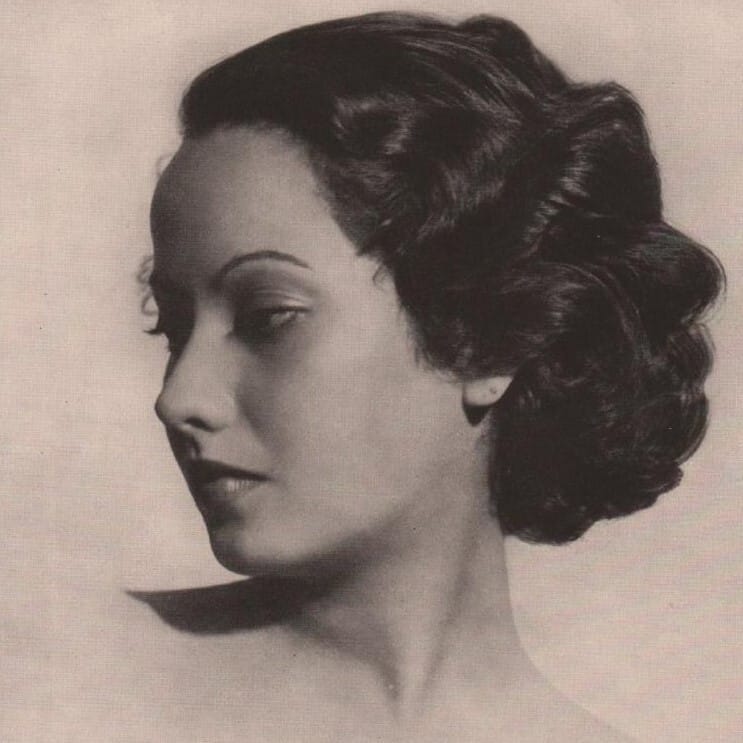As Merle Oberon starred in four dozen films during the golden age of Hollywood, she kept a secret that could have immediately destroyed her career: she was biracial and was born and raised in India. While no longer a secret, her story has all but been forgotten. Mayukh Sen’s new biography of Oberon, Love, Queenie: Merle Oberon, Hollywood’s First South Asian Star, the first in decades, uniquely delves into her family’s background going back to Bombay and Calcutta, where she was born and grew up.
Oberon was conceived after her mother Constance Joyce was raped at fourteen by her stepfather, Arthur Thompson, a British mechanical engineer, who soon left the family in India. Because Constance Joyce was so young to have a baby, Oberon’s grandmother Charlotte raised Oberon as her daughter and Oberon always thought Constance Joyce was her half-sister. Before she was Merle Oberon, Estelle Merle Thompson went by the nickname of Queenie after Charlotte took to calling her “my queen”. From an early age, Queenie had dreams of becoming a movie star. She got her big break (of sorts) when she moved to England with her “mother” Charlotte thanks to a relationship Oberon had started with a British horse racing jockey who was sailing home. Charlotte posed as Oberon’s maid, a role she would play for decades to come.
In London, Oberon met film producer Alexander Korda, who would go on to become a big Hollywood producer and Oberon’s first husband (she would marry four times). Korda had changed his name from Sandor Laszlo Kellner to the less-Jewish and less-ethnic sounding Alexander Korda. Sen suggests that when Korda suggested Queenie do likewise, he wanted to erase Oberon’s racial identity, but neither the name Queenie Thompson nor her given name of Estelle Thompson sounds particularly South Asian. It seems more likely that Korda wanted to find a name that stood out on the big screen. But he most certainly did want to change the story of her heritage, knowing that she would get more roles if she could pass as white. This was during the era of the Hayes Code, which prohibited interracial romance on screen.
With the help of his London Films team, Korda decided to cook up a studio biography for her that would state that her father had been English, her mother French and Dutch. As for her birthplace, Korda and his team found an attractive point of origin for her in the heart-shaped Australian island of Tasmania.

Oberon was hardly unique: Sen compares the South Asian ancestry of a couple other big Hollywood stars, which adds to the narrative of an industry that closely choreographed identity and heritage. Boris Karloff was born William Henry Pratt and was the son of two Anglo-Indian parents. He felt that his dark brown deep-set eyes would be more acceptable as Russian or Slavic than as South Asian. Vivien Leigh, another big Hollywood actor, had a background that resembled Merle’s.
Leigh had been born in the Bengali town of Darjeeling two years after Merle. Her father was white, while her mother was of obscure—likely Armenian, though possibly Parsi or Bengali—heritage; this admixture gave Leigh a pearly complexion. (In fact, Merle’s off-screen biography more closely resembled that of Leigh’s mother, who was often circumspect about her heritage.) American publicity mavens would later fudge the details and say Leigh was French and Irish, but that was the extent of any revision.
The book’s otherwise admirable attempt to convey the period Hollywood’s Golden Age in the 1930s is somewhat derailed by modern usages such as “avatar” and “leaning in”. Nonetheless, Sen’s comprehensive biography of Oberon leaves no gaps in Oberon’s story and is one which still resonates. When Michelle Yeoh won an Oscar a couple of years ago, some in the media asked her what it was like to be the first Asian woman to be nominated for Best Actress. Yeoh replied that Merle Oberon came before her with a 1936 nomination for Best Actress (losing out to Bette Davis). Hollywood actors no longer have to hide who they are; Sen’s book is a good reminder of this progress and what can still be improved.


You must be logged in to post a comment.